A few days ago, we had a very special visit to Crusoe Treasure Winery: our Japanese importers came to meet us in person. It was a very educational time. One of the highlights was meeting our winemaker, Antonio T. Palacios , and we want to share it with you.
Getting to know our winemaker

Being able to talk to Antonio is always a pleasure and a source of continuous learning, which is why we visited his analytical laboratory and even accompanied him to one of his sensory tasting classes at the University of La Rioja , where he and his students conducted a comparative tasting of a Duet del Sea Soul Nº7 , our underwater white wine, and a Duet Sea Soul Nº8 , one of our underwater reds.
The response was surprising; knowing little about the process, everyone immediately noticed the differences and opted for the underwater sample.
“I was surprised by the fact that it is more enveloping, more complex in the mouth ,” Cristina, Antonio’s student, speaking about our underwater white.
Here we share part of Antonio's explanation to his students, along with some of the questions that arose. We recommend reading it:
Question: What does the sea contribute to wine?
Antonio: “ The wines […] become smoother, more velvety, and polymerization increases. All of this is achieved by making a wine that's well-disposed to underwater aging. You achieve a sensorial fusion of acidity and tannins; they're richer, more integrated wines.”

Question: What factors influence the evolution of wine under the sea?
Antonio: “The waves, the currents, depending on the season… […] all the temperature changes, pressure changes, the currents, the kinetics itself, the movement of the water—all that energy makes the bottle of wine go crazy. It's the anti-enology of stillness, of patience. To immerse, we need bold, strong wines, with tannins and acidity, wines that can withstand the onslaught of the sea; otherwise, the sea will destroy them.”
Question: Is the oxygen in underwater wine the same as the oxygen in the cork itself?
Antonio: " No. Underwater wines are born with more oxygen than terrestrial wines due to pressure. More oxygen enters the bottle than on land, than at Earth's atmospheric pressure. This is due to the pressure to which wine bottles are subjected underwater. In any case, we are talking about nano-oxygenation."
Question: If oxygen gets in, could salt get in?
Antonio: " No, water and salt don't get in. We do many types of tests to prove that's not happening, tests that we present to the health authorities."
Question: What you get in 10 years in a land warehouse, can we say you get in 2 years under the sea?
Antonio: “That mental connection exists, but you won't go to the same place, you won't end up with the same profile. You can see that when tasting the wines. It's not just a matter of time, but of a sensorial journey. It's a different journey, an evolutionary journey that leads you to a more accelerated aging process, but patience and time on land won't take you to the same place.”
Under the sea, you have an energy that is transmitted through the bottle, plus a greater presence of oxygen, which makes the underwater wine breathe more. That, plus the temperature changes that cause the volume to change inside the bottle, are very good for chemical kinetics."
Question: What cork is used?

Antonio: " We use technical corks, made in such a way that they are very similar to each other, with an OTR, oxygen transfer through the cork, which is exactly the same from one cork to another, this is vital for underwater wine. The evolution of underwater wine is linked to the quantity of oxygen and the kinetic changes that marine energy drives inside the bottle. This means that the chemistry, especially due to the polymerization phenomena and the combination of anthocyanin tannins, proceeds much faster than on land. There is only one common factor with terrestrial aging: darkness."
Question: What is underwater breeding?
Antonio: " The subtle changes in temperature, we are talking about very few tenths, from one season to another, from summer to winter, yes, they can be greater, but really, the changes are very small, plus the pressure changes that are wave to wave; the waves can be from 1m high to 9m, all of this causes marine kinetics to modify the transfer of oxygen and also modify the chemical kinetics. All of this causes the wine to change, causing it to evolve in a positive way if the wine is clean, stable and free of microorganisms.
The sea multiplies the wine you submerge several times over by "X". If you submerge a bad wine, you'll get a worse wine, but if you make a good wine designed to be submerged, you'll extract a wine that both the sea and the land will benefit from.
Question: Can we start with the tasting of the underwater white?
Antonio: “In the case of white wine, on an olfactory level, there's a part where you can feel the sea. I don't know if it's subjective, maybe it is, but I smell a bit of sea breeze, aromas that lead you to the mineralization in the olfactory profile. […] The olfactory background of the sea breeze makes it very elegant, makes it very appetizing. If you have an underwater wine and it smells of the sea, it smells good . But taste it and tell me what you feel.”


These are some of the highlights from our winemaker's masterclass.
Do you want to feel the difference yourself?
Discover our packs: Duet Sea Soul Nº7 and Duet Sea Soul Nº8 .


